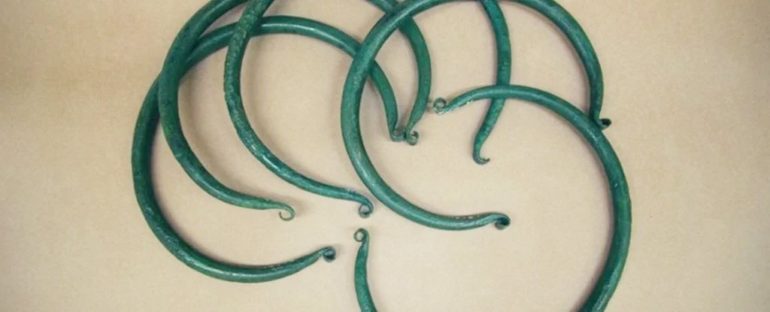Bronze Age Europeans may have used rings and blades as an early form of currency, based on a study of objects from 113 different hoards of artefacts – and these objects might even have been standardised in terms of their weight and size to minimise the chances of getting ripped off.
There’s no evidence early Bronze Age cultures had a precise means of distinguishing masses beyond simply lifting an object and guessing. Psychologically, this means of sensing incremental differences in an object’s qualities by ‘eyeballing’ them is referred to as a difference threshold, or ‘Weber’s law‘.
In a new study, researchers asked volunteers to group items from a sample of more than 5,000 unearthed objects according to their masses, by weighing them in their hand.
Around 70 percent of the studied bronze rings were similar enough in mass – around 195 grams on average – for the difference not to be noticeable when weighed in the hand, and certain collections of ribs and axe blades could be grouped in the same way.
Ribs, aka Spangenbarren. (MHG Kuijpers)
Statistical analysis of the clasp-like ribs suggested groupings of both heavier and lighter items, perhaps reflecting two different levels of value – though the results weren’t as clear as they were with the rings.
Add in the fact that these objects were often found hoarded in large groups, and it’s possible that we’re looking at here is actually a very primitive form of currency – one that would have lasted until more precise weighing tools were introduced in the Middle Bronze Age in Europe.
“The Euros of prehistory came in the form of bronze rings, ribs and axes,” say the study authors. “These Early Bronze Age artefacts were standardised in shape and weight and used as an early form of money.”
There is an area of overlap around the Czech Republic where rings, ribs, and axe blades are found together, the researchers say, and these items may have been used differently in different areas – maybe to show off wealth, rather than as precursors to coins.
The findings might shed some new light on the origins of money itself – whether the idea of money (as a balancing of credits and debits) or the use of materials as money (where the exchanged objects themselves have intrinsic value) came first.

That the people of the early Bronze Age traded items so alike in appearance and weight suggests that we’re looking at materials as money (or “commodity money”) in this case. The ribs, rings, and axe blades had to look and feel similar to each other, otherwise they weren’t worth as much.
Indeed, the researchers think these systems helped to drive the development of more accurate weights and scales to properly measure how heavy or light something was – and therefore how much it might be worth. While we rarely think about weights or currencies when we use them today, they have a fascinating history.
“The origins of money and the formulation of coherent weight and measurement systems are amongst the most significant prehistoric developments of the human intellect,” the researchers write in their paper.
The research has been published in PLOS One.



